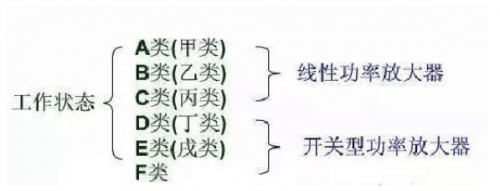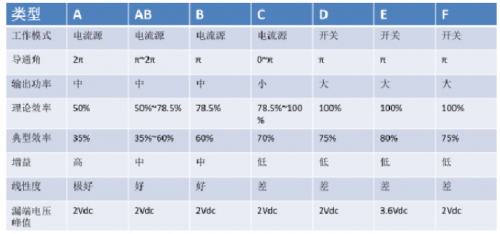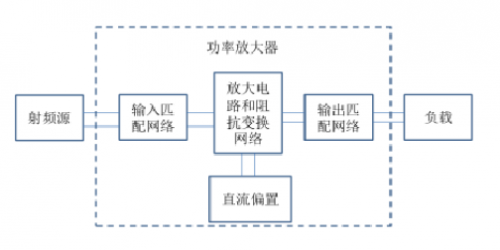Classification and Principles of Power Amplifiers
Time:2023-05-11
Views:1029
Classification of power amplifiers
Class A working state: The collector current of the transistor is always flowing throughout the entire working cycle, and the efficiency of the amplifier is the lowest, resulting in relatively small nonlinear distortion. Generally used in situations that are sensitive to distortion, such as HI-FI audio.
Class B work status: Half cycle work and half cycle end, also known as Class B work status. Two complementary transistors work in push-pull mode, and the efficiency is higher than Class A power amplifier, but there is a problem of Crossover distortion, which is generally used in power amplifiers.
Class A and Class B working state: It is a working state between Class A and Class B, where the transistor has a working cycle greater than half, and the characteristics of this power amplifier are between Class A and Class B.
Class C working state: In this state, the transistor operates for less than half a cycle. Class C working state is also known as Class C working state, and Class C power amplifiers are generally used for high-frequency resonant power amplifiers.
Class D working state: modulate the sound signal into PWM form, operate the transistor in the on/off state, and restore the signal waveform at the output end through an LC filter. High efficiency, poor high-frequency characteristics, used for miniaturized battery power supply and occasions requiring high efficiency.
According to different working states, power amplifiers are classified as follows:

The working frequency of traditional linear power amplifiers is high, but the frequency band is relatively narrow. RF power amplifiers generally use a frequency selection network as the load loop. RF power amplifiers can be classified into three working states according to the different current conduction angles: A (A), B (B), and C (C). The conduction angle of Class A amplifier current is 360 °, suitable for small signal low-power amplification. The conduction angle of Class B amplifier current is equal to 180 °, while the conduction angle of Class C amplifier current is less than 180 °. Both Class B and Class C are suitable for high-power working conditions, while Class C has the highest output power and efficiency among the three working conditions. Most RF power amplifiers work in Class C, but the current waveform distortion of Class C amplifiers is too large, which can only be used for load resonant power amplification using tuning loops. Due to the filtering ability of the tuning circuit, the circuit current and voltage are still close to sinusoidal waveforms, with minimal distortion.
Switching Mode PA (SMPA) enables electronic devices to operate in a switching state. Common types of SMPA include Class D amplifiers and Class E amplifiers, with Class D amplifiers having higher efficiency than Class C amplifiers. SMPA drives the active transistor in switch mode, and the working state of the transistor is either on or off. The time-domain waveform of its voltage and current does not overlap, so the DC power consumption is zero, and the ideal efficiency can reach 100%.
Traditional linear power amplifiers have high gain and linearity but low efficiency, while switch type power amplifiers have high efficiency and high output power, but poor linearity. Please refer to the table below for details:

Circuit composition
There are different types of amplifiers. To simplify, the circuit of an amplifier can be composed of the following components: transistors, bias and stabilization circuits, and input output matching circuits.

1. Transistor
There are many types of transistors, including there are currently multiple structures of transistors that have been invented. Essentially, the operation of a transistor is manifested as a controlled current or voltage source, and its working mechanism is to convert the energy of a DC without content into a "useful" output. Direct current energy is obtained from the outside, consumed by transistors, and converted into useful components. Different transistors have different "capabilities", such as their ability to withstand power, which is also due to their ability to obtain different DC energy; For example, its different reaction speeds determine how wide and high a frequency band it can operate in; For example, its impedance towards the input and output terminals is different, and its external reaction ability is different, which determines the difficulty of matching it.
2. Bias circuit and stabilization circuit
Bias and stabilization circuits are two different types of circuits, but they can be discussed together because they are often difficult to distinguish and their design goals converge.
The operation of transistors requires certain bias conditions, which we call static operating points. This is the fundamental foundation of a transistor, its own "positioning". Each transistor has a certain positioning for itself, and its different positioning will determine its own working mode, and there are also different performance performances in different positioning. Some positioning points have small fluctuations and are suitable for small signal operation; Some positioning points have significant fluctuations and are suitable for high-power output; Some positioning points require less and release purely, making them suitable for low noise work; At some positioning points, the transistor always hovers between saturation and cutoff, in an on/off state. An appropriate offset point is the foundation for normal operation. When designing broadband power amplifiers or operating at high frequencies, the bias circuit has a significant impact on circuit performance. Therefore, the bias circuit should be considered as a part of the matching circuit.
There are two main types of bias networks, passive networks and active networks. Passive networks (i.e. self biased networks) typically consist of resistive networks that provide suitable operating voltage and current for transistors. Its main drawback is its sensitivity to changes in transistor parameters and poor temperature stability. Active bias networks can improve the stability of static working points and also improve good temperature stability, but they also have some problems, such as increasing circuit size, increasing the difficulty of circuit layout, and increasing power consumption. A stable circuit must be present before matching the circuit, as the transistor needs to have the stable circuit as part of itself before coming into contact with the outside world. In the eyes of the outside world, the transistor with a stable circuit is a "brand new" transistor. It made certain sacrifices and achieved stability. The mechanism of stabilizing the circuit can ensure the smooth and stable operation of the transistor.
3. Input output matching circuit
The purpose of matching circuits is to choose an acceptable method. For transistors that want to provide greater gain, the approach is to fully accept and output. This means that through the interface of the matching circuit, communication between different transistors is smoother. For different types of amplifiers, the matching circuit is not just a "complete acceptance" design method. Some small tubes with small direct current and shallow foundation are more willing to be blocked to achieve better noise performance when accepted, but they should not be blocked too much, otherwise their contribution will be affected. For some giant power transistors, it is necessary to be cautious when outputting, as they are more unstable. At the same time, a certain amount of retention helps them unleash more "undistorted" energy.
Typical impedance matching networks include L matching, π matching, and T matching. Among them, L matching is characterized by a simple structure and only two degrees of freedom L and C. Once the impedance conversion ratio and resonance frequency are determined, the Q value (bandwidth) of the network is also determined. One advantage of π shaped matching networks is that no matter what parasitic capacitance is connected to it, it can be absorbed into the network. This has also led to the widespread application of π shaped matching networks, as in many practical situations, the dominant parasitic component is the capacitor. T-shaped matching can be used to absorb parasitic parameters into the network when the parasitic parameters at the power and load ends are mainly inductive.
|
Disclaimer: This article is transferred from other platforms and does not represent the views and positions of this site. If there is any infringement or objection, please contact us to delete it. thank you! |











